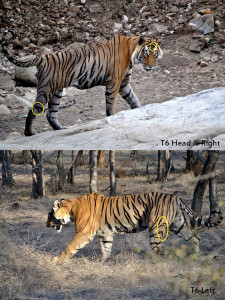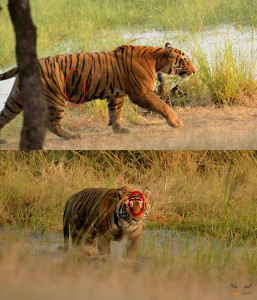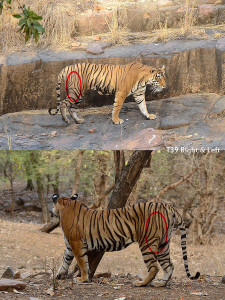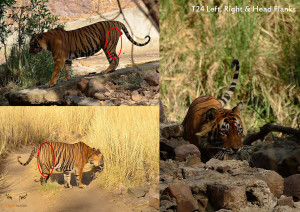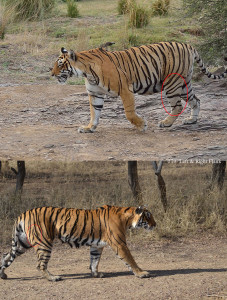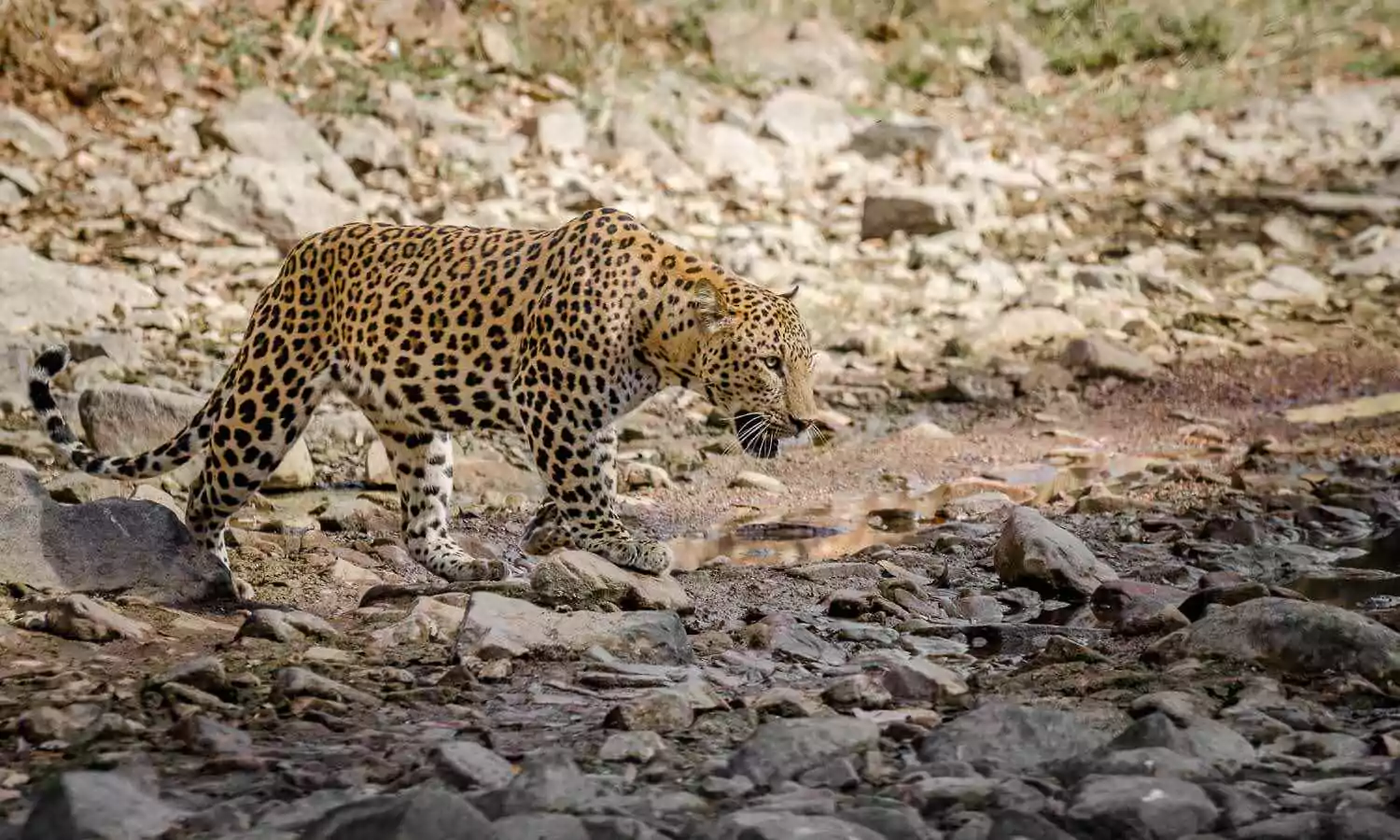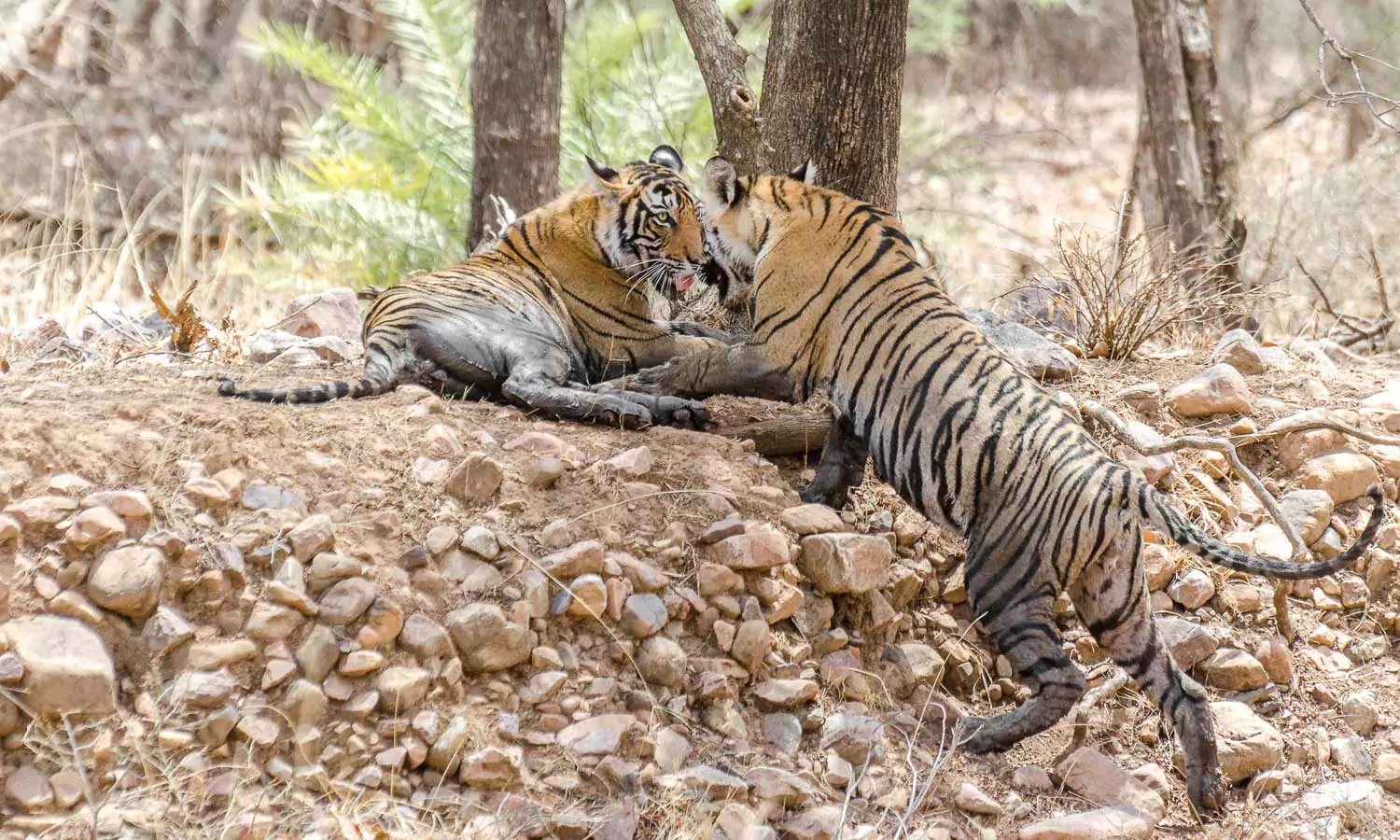Big Cats of Ranthambore
Wish to know more about your favourite big cats of Ranthambore? Sharing brief on several resident tigers, profiles & identification marks of various individuals at Ranthambore.
How many tigers are currently there in Ranthambore National Park?
One of the most frequently asked questions on various forums. More tigers mean more chances of sighting after all.
Ranthambore National Park currently has 80 plus tigers. 15 females, 11 males & cubs are sighted in areas open for tourism spread across 10 tourism zones in which safari is conducted.
Sharing a chart on the status of individual tigers sighted in the tourism area at Ranthambore.
| S.No | Females in Park | Present in Tourism Zone | Active Males | Present in Tourism Zone |
|---|
| 1 |
T39 |
Yes |
T86 |
Dead 03.11.24 |
| 2 |
T60 |
Dead 04.02.24 |
T58 |
Dead 07.07.24 |
| 3 |
T84 |
Yes |
T57 |
Dead 10.01.23 |
| 4 |
T19 |
Dead 8.02.23 |
T34 |
Dead |
| 5 |
T41 |
Missing |
T101 |
Yes |
| 6 |
T8 |
Yes |
T108 |
Yes |
| 7 |
T61 |
Yes |
T120 |
Yes |
| 8 |
T59 |
Yes |
T121 |
Yes |
| 9 |
T79 |
Yes |
T123 |
Yes |
| 10 |
T105 |
Yes |
Male cub of Shakti 1 |
Yes |
| 11 |
T107 |
Yes |
Male cub of Shakti 2 |
Yes |
| 12 |
T111 |
Yes |
T 2309 |
Dead 23.12.24 |
| 13 |
T114 |
Dead 31.01.23 |
T2310 |
Yes |
| 14 |
T99 |
Yes |
|
|
| 15 |
T124 |
Yes |
|
|
| 16 |
T125 |
Yes |
|
|
| 17 |
T127 |
Yes |
|
|
| 18 |
T133 |
Yes |
|
|
Count of cubs present in the tourism zone at Ranthambore in 2025:
| S.No | Mother | No of Cubs | Male | Female |
|---|
| 1 |
Sultana - T107 |
3 |
|
|
| 2 |
Shakti-
T111 |
2 |
|
|
| 2 |
Riddhi- T124 |
3 |
2 |
1 |
| 3 |
Arrowhead T84 |
3 |
1 |
2 |
| 4 |
Siddhi- T125 |
3 |
|
|
Which are some of the most popular tigers in Ranthambore National Park in 2024?
- Riddhi, also known as T124. The current queen of Ranthambore and the current dominant female of the lake area in Ranthambore, Riddhi is the daughter of Arrowhead and the great-granddaughter of the legendary tiger Machli. Born sometime in 2018, this 5-year-old female is raising her first litter of 3 cubs. Known for her aggressive nature, Riddhi took control of the lake area after multiple fights with her sister, Siddhi aka T125 and mother, T84 aka Arrowhead. Her current partner is T120, aka Charger, who is also the father of these cubs.
- Charger- also called Ganesh by a few; his official number is T120. Born around September 2018 in the non-tourism area of the park, he is the grandson of Krishna T19 and son of T63- Chanda from Krishna's first litter. Sighted in the tourism area of the national park for the first time in 2021, this male has earned himself a reputation by killing and eating a leopard, sloth bear and dog. This bold and confident male hunts regularly in the lakes, reminding people of the legendary male Charger who once ruled this land.
- Shakti- Daughter of T 19, aka Kirshna from her last litter and current resident female of Berda, Semli and Bakola area of Ranthambore. Born in 2017, this 6-year-old female successfully raised her litter of 3 cubs- 2 male and one female fathered by T86.
- Arrow Head- Mother of Riddhi and erstwhile queen of Ranthambore National. Born in early 2014, she is raising a litter of 3 cubs in a small territory on the foothills of Ranthambore Fort. This is her fourth litter so far, only the second one survived before this one.
How are tigers identified in Ranthambore National Park?
All individuals have been assigned unique ID numbers from T1 to T139 by the forest department. There is no particular order to assigning IDs, once allotted to an individual, it is never reassigned. Apart from these, tigers can also be identified based on stripe patterns. As a practice, the ID number is assigned to a tiger around 2 years of age, once it officially separates from the mother.
Like no two human beings have the same fingerprints, each tiger would have some unique stripe pattern; some of these unique stripes found are used for identification purposes. Most of the forest officials, guides, drivers & wildlife experts use these unique ID marks to identify these tigers in combination with factors like the area of sighting & gender.
There could be multiple identification marks for a particular tiger; sharing some of these ID marks is more prominent & is generally used for identifying these individuals.
Tiger Profiles & Identification Marks
Erstwhile queen of Ranthambore. Aged 17 plus years, she is the oldest surviving tigress of Ranthambore & probably in the world. One of the most photographed tigers in the entire world, she inherited her name from her mother, Machli I or original Machli, and more than 50% of striped residents at Ranthambore & Sariska are descendants from her bloodline.
Born in the monsoon of 1997, she was a dominant cub in a litter of 3 females. By 1999, she had started hunting on her own & even took over part of her mother’s territory. Her first mating was with Bamboo Ram, a huge male, around April 2000 & gave birth to her first litter of two male cubs- named Broken Tale & Slant Ear. In April 2002, she again gave birth to a litter of three cubs, but only two survived- named Jhumru & Jhumri. Her third litter was born around March 2005 and was named Bunty & Babli. Despite losing two of her canines in the summer of 2005, she not only successfully reared this litter but, to everyone’s surprise, gave birth to another litter of three females (her fourth) in the monsoon of 2006.
History repeated itself when her daughter from the last litter T17 drove her out, & she is now a resident of Bhutkhurra-ama ghati -baba ki gufa area in zones IV & V. Her daughter from the om last litter T19 rules most of her are, a including the lakes.
Have highlighted two prominent markings on her face- a mark just above the eye & ‘fish gills' or ‘fork’ like mark on her left cheek.
The erstwhile queen of Ranthambore died on 18.08.2016 due to natural causes.
A dominant male tiger of zone IV, his current territory includes the Aadi Dagar-Berda-Semli-Bakola and Anatpura areas of the park. He is one among the three cubs born to T5 aka Kachida tigress fathered by T2 aka Big Daddy. He also happens to be the soul mate of T41 & is also the father of her female subadult cub. His sibling T8 (F) is a resident female of Sawai Mansingh Sanctuary whereas T7 is now settled in Sariska, locally known as ST6.
ID mark- Tree-like mark on the left eye & Y symbol on the right hind leg. There is also variation in his body colour. The hind side is lighter as compared to the head & chest.
Another prominent but shy male tiger of Ranthambore. Identified through the dollar’$’ mark on his stomach (right side) is also identified through the word ‘AND’ kind of formation between both his eyes. This tiger’s territory extends from Gular kui-Tamba Khan- Kachida valley- Dhakda Area on zone IV & V.
First sighted in January 2006, T25 is one among the three cubs born to T22 after a successful mating with T20 (aka Jhumroo). He, therefore, is a direct descendant of Machli. Very less is known about his early years & was initially thought to be a female.
He has been in the news recently for not only protecting cubs of deceased tigress T5 but also has been spotted regularly with them on various occasions, breaking the popular myth of male tigers being solitary animals & playing no role in the upbringing of cubs whatsoever.
Beautiful tigress from Ranthambore National Park. Daughter of Sultanpur Chotti aka T13 she is the sister of T38(M) who is famous for leaving park boundaries & settling in Kuno National Park, MP. She is currently raising her litter of two cubs fathered by T24.
Id marks are inverted Trishul-like marks above the right eye & two prominent ‘Y’ formations on the right hind leg. She currently roams in singhdwar-sultanpur-kala peela pani-khemcha Kund- phootah bhanda-kishni ka deh-soleshwar areas and of the park situated across zone I, II & VI.
This handsome lad is currently a resident male of the lake area in zone III. His territory includes the entire lake area-Singh Dwar-Gular kui-Tamba Khan-Lakkad Dah-Mandoop- Lahpru- chinnali- Gaandra tiraha -gudha Nal Ghati-Telan Pacheriacrosss zone II, III & IV and a large chunk of the non-tourism area. First sighted on 01.01.08, he is a litter of T27- Gilai Sagar Female. Fathered the cubs of T19 from both litters.
Identified by a star ‘*’ like mark above his left eye, this tiger at a lot of times is confused with another male tiger T25 by most due to similar markings & overlapping territory.
Another prominent tiger from the Tourism zone, fathered by Jhumroo aka T20 this male currently dominates zone I, VI and II of the park. Born to T22 along with T23 & T25, he was first sighted in January 2006. Probably the biggest male tiger in the tourism zone, He happens to be the suspect behind the killing of four people including two forest guards at Ranthambore. He is a gentleman otherwise to visitors of Ganesh temple who cross through his territory each day in large numbers on foot. He is currently in the news for killing Rampal Saini a forest guard in May 2015.
Identification marks are-Tree like marks above the right eye, alphabet ‘A’ or triangle-like formation on the left hind leg (circled in yellow) and a Trishul kind of symbol on his right hind leg (circled in yellow).
He was moved out of RTR on 16.05.15 to Sajjangarh Biological Park near Udaipur.
Female cub of Machli from her last litter & current queen of Ranthambore. She is currently raising her second litter of 3 cubs around the lake area at Ranthambore which she occupied from her sister T17. Before this, she successfully reared another litter of 2 male & 1 female cub in the Lahpur Valley area of the park which is closed to tourists. Her current territory is considered to be even bigger than some of the male tigers of the park. Though her movement is now confined around three lakes otherwise she controls a vast area across zones 2-5 plus a significant portion of the non-tourism area. Born in 2006, this 9-year-old tigress is a skilled hunter as per observers & her success ratio is very high as compared to other females in the tourism area. Both the litters have been fathered by star male aka T28.


